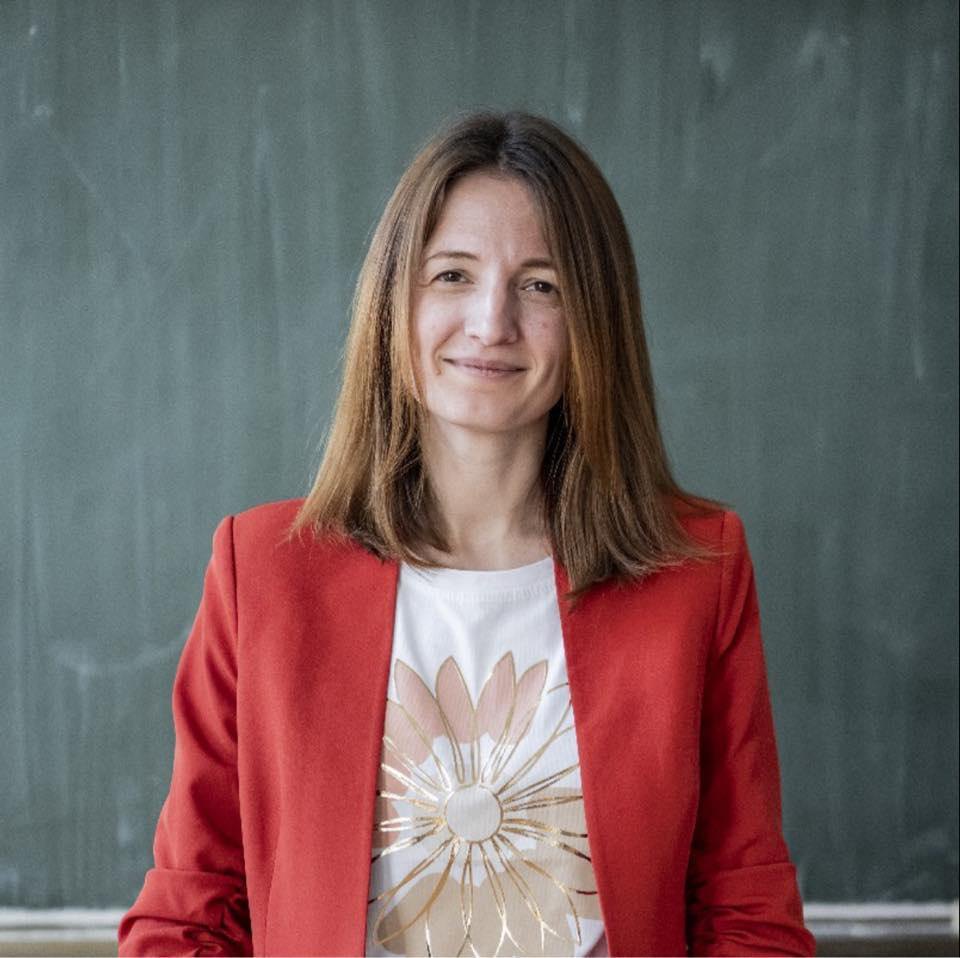
The demographic gap
What is the current situation in preschool education? In the past, securing a place in a kindergarten required registering almost from birth. Given all the circumstances, what are the current trends?
Today, 750,000 children are receiving preschool education. Of these, 168,000 participate in a mixed or online format. Why do I highlight this figure? Because, in reality, most of these children do not physically attend kindergarten. No matter how much effort educators put in, it is difficult to fulfil one of the key functions of preschool education—developing children’s social and emotional intelligence—through remote learning. Nevertheless, having this option available remains important.
Of course, socialisation is not limited to preschool education; children can also develop these skills in informal settings, such as playing outside in a sandbox. However, this is an entirely different experience. Moreover, many children studying online do not play in the yard at all because they live under constant shelling and have no contact with their peers. As a result, research indicates that children in frontline regions are already experiencing a decline in social and emotional skills. When they later enter school—often also in an online format—they are unprepared. They struggle with understanding rules, interacting with different children, and learning basic social behaviours such as waiting their turn. These are seemingly simple concepts that are naturally developed in kindergarten through group interaction.
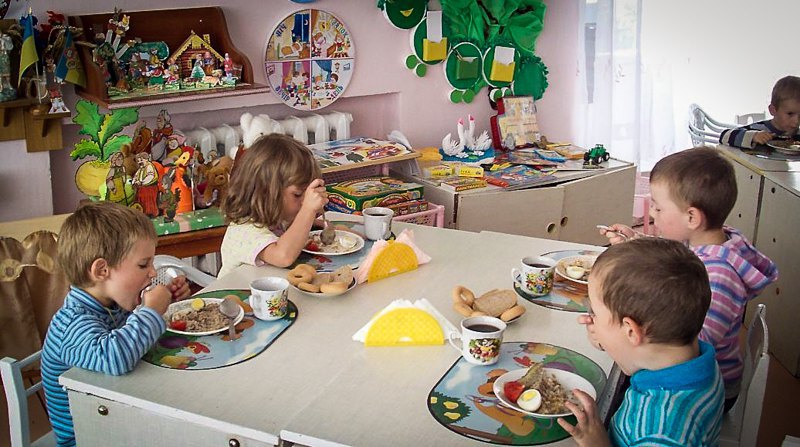
And what is the overall proportion of preschoolers currently enrolled in preschool education?
This is a complex and sensitive issue for us, with multiple aspects. According to the Ministry of Justice, there are currently 881,000 children aged 1 to 6. In terms of overall coverage, the rate is quite good. However, with such figures, there should still be a queue for preschool institutions. Yet, outside of Kyiv, kindergartens are already underfilled.
In Kyiv, there is still a waiting list for certain institutions. But if you are flexible and ready to send your child immediately—for example, applying today and starting kindergarten tomorrow, even without belonging to a privileged category—you can do so. This is likely the first time such a situation has occurred in Kyiv. The city’s “Money Follows the Child” programme (a state financial compensation for parents to cover private kindergarten fees – LB.ua) has helped significantly. The opening of many private kindergartens has eased some of the burden, making private preschool education more accessible. By the end of 2022, there were nearly 50 privately or corporate-owned institutions (131 in Kyiv). However, as I mentioned, the problem is not just about finding a place.
What is the current state of the communal networks?
There are 11,804 preschools operating in various formats. As of early February, 129 had been destroyed, and 1,237 had suffered damage. Additionally, 8,181 of them have shelters. Each year, we request funding to build more. Last year, funds were allocated only for schools, and this year we will make the same request.
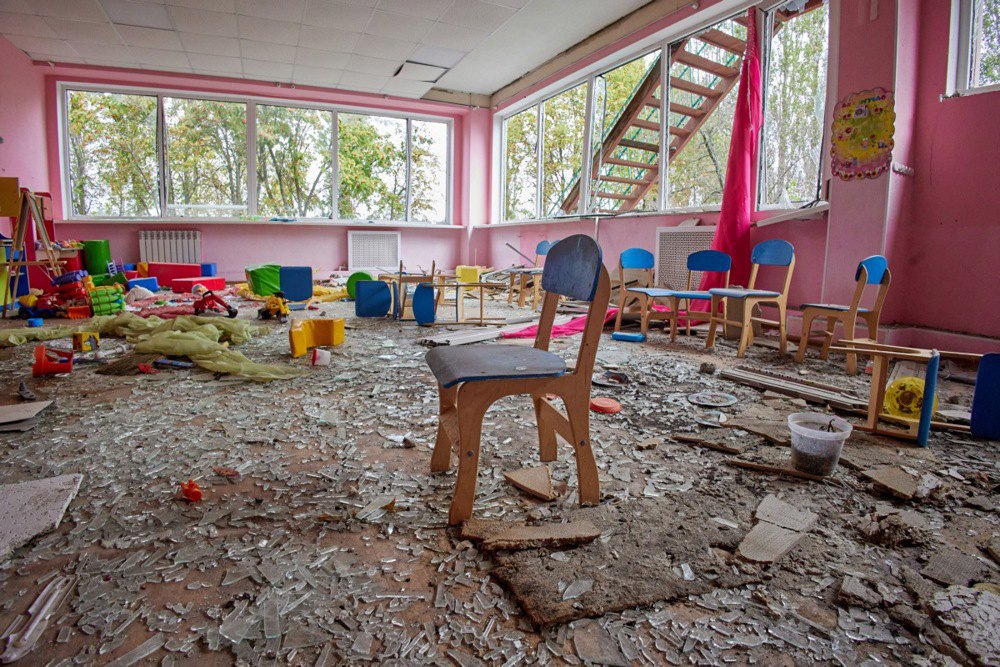
But will they allocate funds only for schools?
Listen, we might not even receive funding for schools, you know? We must be realistic about the conditions we are living in. The challenge with building shelters in kindergartens is their cost-effectiveness. A school shelter serves around 1,500 children, making the investment worthwhile. A kindergarten shelter, only slightly smaller, costs at least $200,000 but serves just 150 children. At the same time, kindergartens are shrinking in numbers.
According to forecasts, by 2027, there will be 570,000 children aged 1 to 6 in Ukraine. This number has been steadily declining for years, but we have never faced such a crisis before. The children now entering kindergarten were born during the COVID-19 pandemic and the full-scale war. Families who decided to have children during these difficult times have shown remarkable resilience—and thank God we have them. However, this demographic shift demands a high degree of flexibility from the system to sustain both services and infrastructure. Previously, such flexibility did not exist, but the preschool education reform—and the new Law on Preschool Education, which came into force on 1 January 2025—aims to address this.
Adapt or…
Why should it be introduced? What is it about in the first place?
This reform is about ensuring the system can adapt not only to survive but also to expand children’s access to quality education. In other words, while the system has remained unchanged for 30 years—not in terms of content, but in terms of organisation—this must change.
Previously, there were only two options: either a large kindergarten or none at all, apart from pre-school units attached to schools. Now, many new types of kindergartens are emerging. That is one aspect of the reform. Another key element is that the law allows for additional funding through paid services and salary increases in the sector—even within the existing budget. Currently, hromadas spend UAH 54 billion annually on preschool education, which amounts to an average of UAH 5,300 per child. But where does this money go? Is it used to pay specialists who work directly with children, or does it fund well-maintained flowerbeds in kindergartens? Do children receive sufficient methodological support? What exactly are we financing?
This reform prioritises funding for teachers. That is why the law introduces important changes to regulate teachers’ workloads. A new staffing structure will follow—this is a priority.
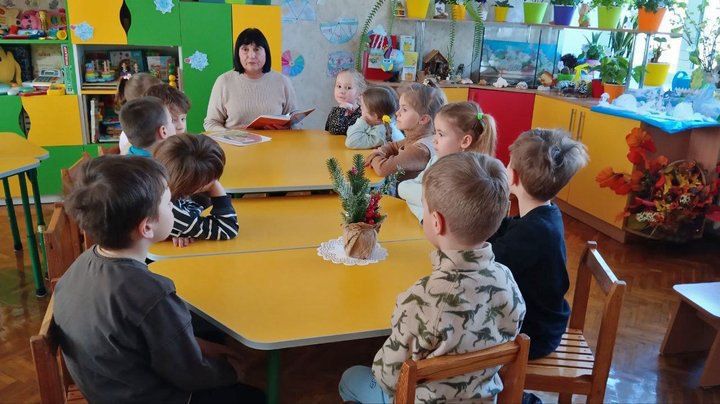
Each hromada can now decide whether to outsource certain services, as Kryvyi Rih has done. Instead of employing security guards in kindergartens, they have installed video surveillance and alarm systems. Some communities have also implemented cost-effective solutions, such as centralised kitchens serving multiple institutions. Savings from such measures can be redirected towards increasing educators’ salaries.
Let’s go into more detail on each aspect. The new law introduces mini-kindergartens, family kindergartens, and mobile kindergartens. What does this mean?
Many people consider the introduction of mini-kindergartens, family kindergartens, and mobile kindergartens the main innovation of the reform. But that is not the case.
It is simply the most visible and easily understood change.
Yes, mobile kindergartens will appear in Ukraine. These are specially equipped buses containing all the necessary materials for preschool education and active leisure. They will regularly visit settlements without kindergartens, stopping in safe locations near shelters. However, this is meant as a last resort. The regulations clearly state that if all else fails, a mobile kindergarten should be created only until a more permanent solution—such as a preschool unit within a library—can be established.
A mobile kindergarten is a solution for areas where educators are scarce—for instance, in communities where many have left. In such cases, mobile teams can step in. Why was it necessary to specify this? To ensure that travel time is accounted for in teachers’ workloads. Currently, educators may spend three hours travelling to work with children for just one hour, yet they are only paid for that hour of teaching. The new law addresses this issue.
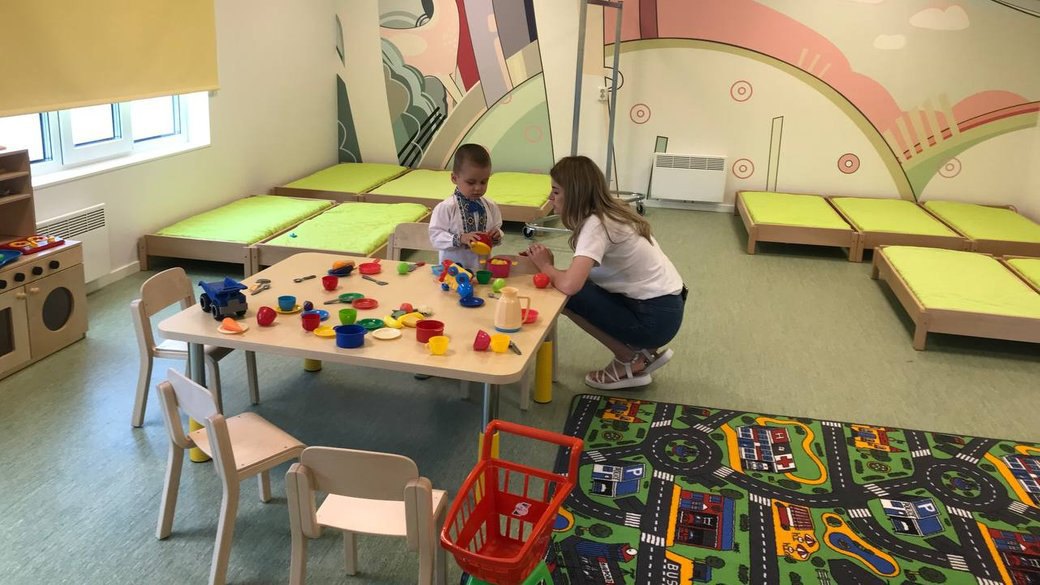
What is a preschool unit in the context of the new law?
Let’s look at how it used to be and why it didn’t work. Previously, a preschool unit could only exist within a school. The school would then change its charter and create a separate structure.
Now, the approach is different. Suppose there was a kindergarten in a particular hromadasettlement, but it was effectively closed because it had only six children. Meanwhile, the local library remained open. Under the new system, a group for these six children can be established, using the library as a venue—either rented out or provided free of charge—while the hromadamay cover utility costs. This group functions as a branch of another kindergarten within the community, even if it is 10 km away.
Another example is a kindergarten that operates remotely due to the lack of a shelter. In such cases, it can establish branches in a library or another institution that has a shelter, allowing children in remote learning to attend kindergarten in person.
Now, a kindergarten can have two remote groups, three full-time groups, or a mix—such as three groups following one schedule and two following another. In essence, a communal kindergarten, like an umbrella, can accommodate different types of staff depending on the community’s needs: a nursery, a kindergarten, a mini-kindergarten operating as a unit elsewhere, or even a mobile team. This is the core of the reform. It is not about introducing massive fleets of buses—far from it.
That said, one such bus is already operating in a de-occupied territory. It arrives, parks near a shelter, and facilitates activities with children either inside or on a nearby playground. Finland provided this bus as a model for how the format should function. Based on this example, we are working on state sanitary standards for mobile kindergartens. However, this will not become widespread; it is a solution for emergency situations. As a temporary measure, it is highly effective—but it is not a substitute for kindergartens. Our primary models will remain nurseries and kindergartens, along with preschool units of both types.
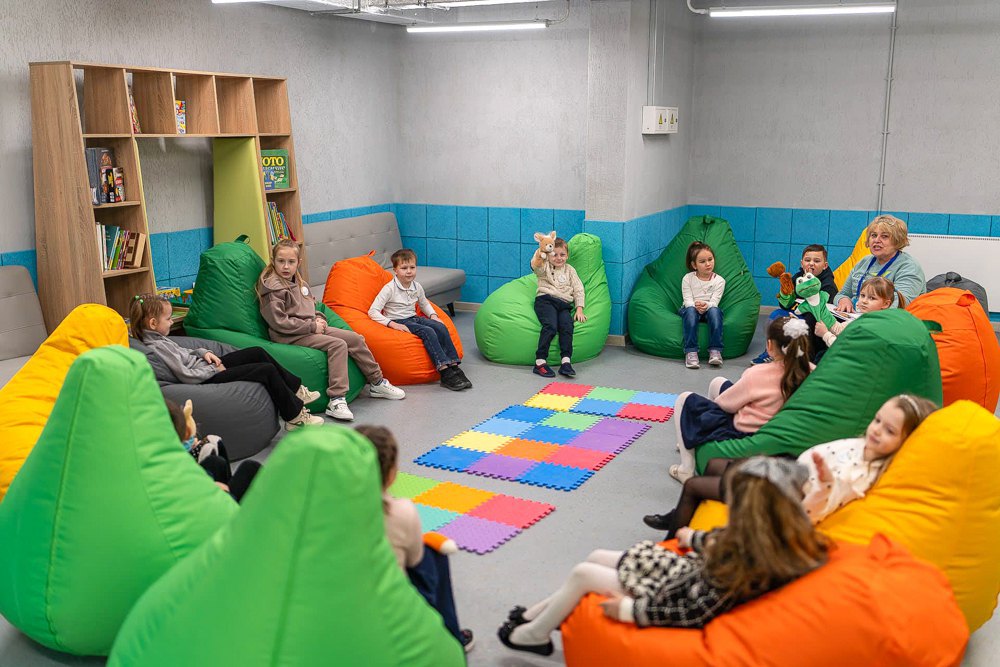
The law also mentions a pedagogical partnership centre.
I like this idea, and we are currently piloting such a centre in Zaporizhzhya. But since no one fully understands what it is, let me explain.
Imagine a mother is still on maternity leave with a child between one and three years old. She can work remotely, so she comes to the centre, where she has a designated workspace while her child is under the supervision of a teacher. This allows the mother to take a breath, return to work, and reconnect with society. While this practice is not yet common here, it has proven highly effective in Australia.
And on what basis can this centre be opened?
It can be implemented absolutely anywhere.
Will it also be a subdivision of a communal kindergarten?
Yes.
It’s amazing how proactive kindergarten managers are.
They are incredibly proactive. The only thing they need is guidance—an understanding that this is possible and how to implement it. That’s where we, the entire Ministry of Education and Science, step in. But we don’t have time. And we don’t have time because writing regulations for something that doesn’t yet exist is extremely difficult. Of course, no one should care about our struggle—it’s not their concern. We simply need to speed up and establish processes.
If much is not yet ready at the level of regulatory documents, what was the point of speeding up the introduction of the law? After all, it was supposed to come into force only in July 2025.
There were objective reasons for doing so. This wasn’t just the ministry’s decision; it was supported by parliament. The urgency stemmed from the need to meet the indicators outlined in the Ukraine Facility Plan. The next tranche of financial support for Ukraine was directly tied to this.
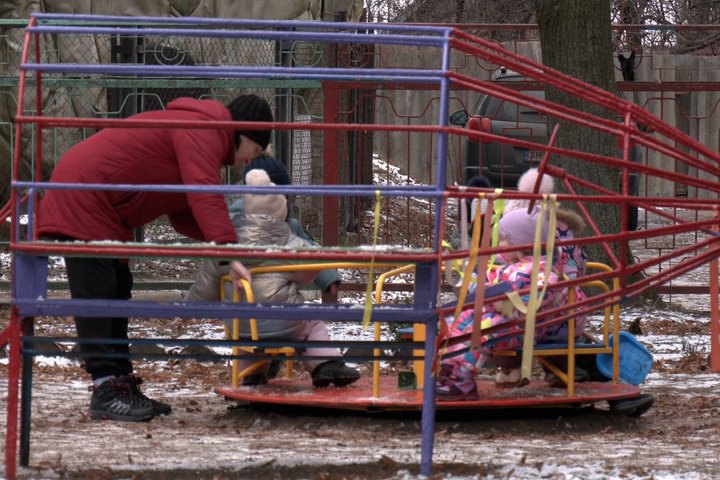
Also, from now on, kindergartens should be available for children from the age of three months. This is widely discussed in the context of the reform.
Yes, and we are often asked by institution heads: “If a three-month-old child is brought in tomorrow, do we have to accept them?” I sincerely hope—and firmly believe—that we will see very few, if any, children in kindergartens from such a young age. This should remain an exceptional case.
However, the law provides for this possibility because real-life situations vary—there are single parents, families in difficult circumstances, and other exceptional cases. Most of these children will not be cared for in large communal kindergartens but rather in small private mini-kindergartens or semi-home-based settings. The law now enables this by introducing the concept of a mini-kindergarten.
On the other hand, kindergartens have long been able to accept children from the age of one. Why, then, were there so few nurseries?
Simply because there weren’t enough places. The general rule was that since mothers could remain on maternity leave until their child turned three, in a situation of limited capacity, priority was given to children over three.
Now, the situation has reversed. To preserve the kindergarten network, we need to actively encourage younger children to enrol—from one and a half years old—so that their mothers can return to work, while ensuring the kindergartens provide high-quality services.
Are all kindergartens ready to open for one-year-olds?
There are currently 187,000 children in this age group. The answer is no, they are not. We need to support educators, provide them with appropriate methods, and guide institutions on what to feed the children and what their working hours should be. We are currently developing professional standards for nannies—I dislike this term, but unfortunately, it is part of the official classification of professions. Additionally, we are introducing standards for assistant educators, clearly outlining expectations for both educators and their assistants working with this age group.
Kindergartens have previously worked with such young children, so we are not reinventing the wheel. However, given the current economic situation, we face two major challenges: a severe labour market shortage and institutions with unused or closed facilities. Naturally, we must help these institutions expand their operations to accommodate younger children.
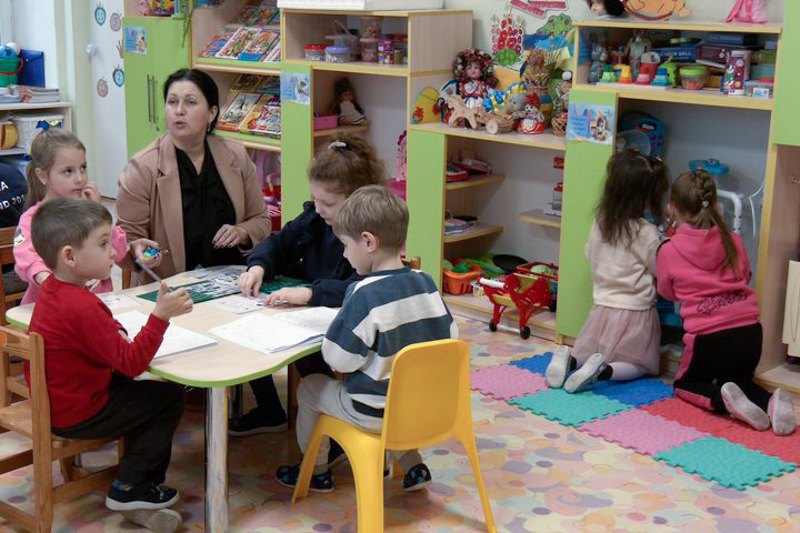
Do you think parents will send their children to kindergarten so early? There are certain parental attitudes.
Last year, the UN Children’s Fund (UNICEF) conducted a study on parents’ views regarding kindergartens. In the past, parents primarily saw kindergartens as a means to enable them to work. Now, however, 68% of surveyed parents believe that kindergarten is essential for a child’s development. This shift in perception is a significant achievement—people now recognise that a kindergarten is not merely a place to leave children while working, but a vital environment for their development.
At the same time, parents have a strong sense of what constitutes quality service. Simply put, a Ukrainian mother will not place her child in just any kindergarten for the sake of returning to work. The study also found that parents of children over two years old are generally ready to send them to kindergarten, but nurseries remain scarce. Parents of children under two believe their child is too young for kindergarten. However, the study did not clarify whether this belief comes from the parents themselves or if it is influenced by kindergartens. A follow-up study is planned to investigate this further, but for now, there is no definitive answer.
What we do know is that, based on international experience, children from the age of one can benefit from attending kindergarten—provided they receive high-quality services. Ukraine has a unique advantage in this regard: not only do we have an extensive network of kindergartens, but our educators are highly qualified. Most hold a bachelor’s degree, which is not common in many European countries. These are trained professionals who understand child development and age-specific needs. However, they may require some additional training or refresher courses to adapt to new standards.
Since we have already touched on the topic of quality, in 2020/2021, the quality of preschool education was supposed to be assessed. What are the results?
When comparing ourselves to European countries and the EU, we generally rank in the middle or above average. In fact, we are competing with Scandinavian countries in certain aspects. While there are undoubtedly challenges, including issues related to quality, Ukraine provides a strong level of preschool education services—both in developmental and caregiving aspects.
Our priority must be to maintain and further improve these standards. I have always said, and will continue to say, that preschool education in Ukraine is of a high standard, but it remains significantly underfunded.
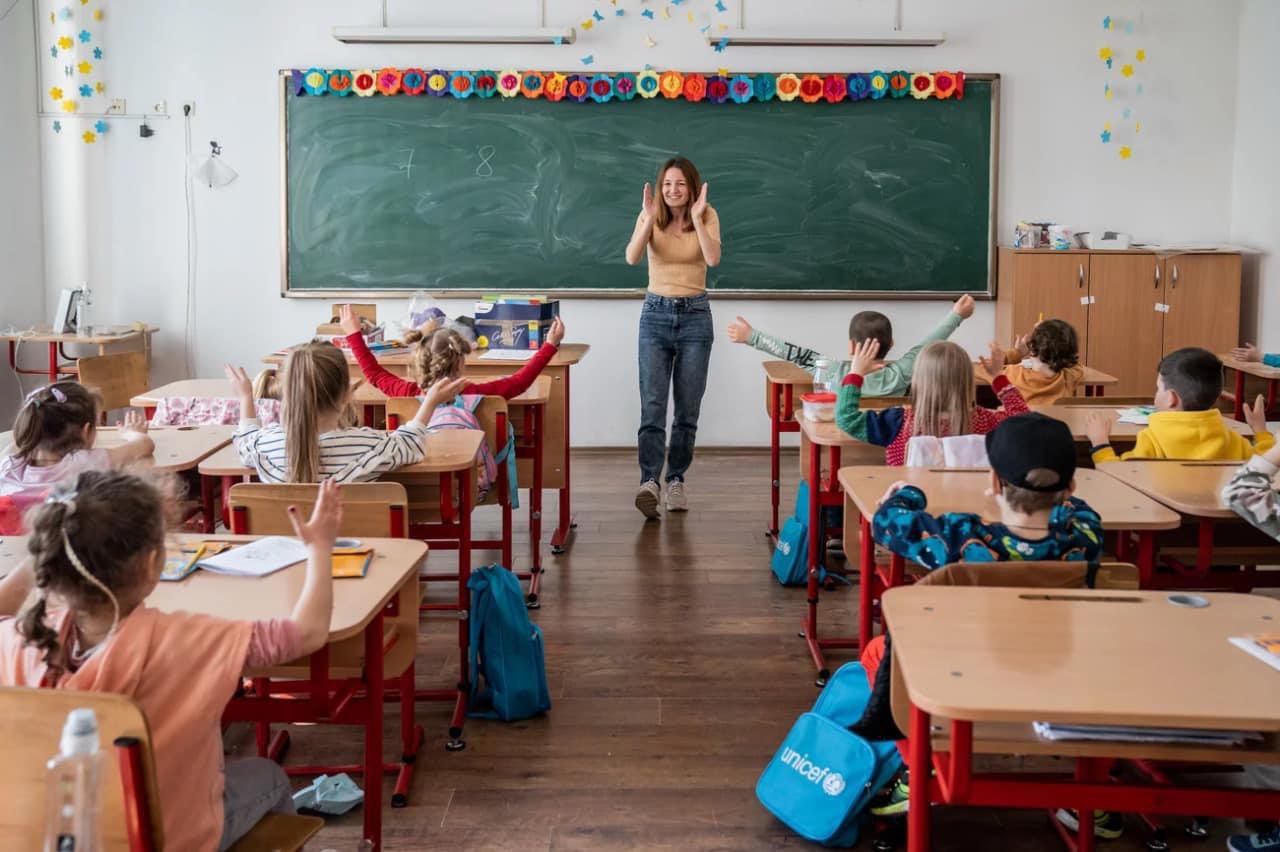
Weaknesses
You have already mentioned the regulation of educators’ workload. What should this mean in practice?
We have specifically regulated the minimum and maximum number of children per group. This is crucial because overcrowded kindergartens remain a significant issue. In the past, if a group was too small, the common response was:
“What do we do?” – “We disband it.”
In practice, this meant transferring children to other groups, often placing them as the 28th or 29th child on the list, with the justification that it was required by law. Now, communities have the option to organise a group with as few as five children. The maximum group size depends on age:
- Three years and older – no more than 20 children
- Two to three years old – no more than 15 children
- One to two years old – a maximum of 10 children
These regulations apply to regular groups, not inclusive ones.
What will happen to groups that are already overcrowded?
It is essential to clarify that a room does not automatically equate to a group of children. In practical terms, if sanitary regulations and infrastructure standards permit a large group size, then that is acceptable—but only if there are two educators. This means an additional educator position must be introduced, which improves working conditions.
For educators, this change offers two possibilities:
- If the position remains vacant, an existing educator can work part-time and receive a higher salary.
- A second educator can be hired to take over the shift.
Of course, this will place an additional financial burden on hromadas. It is important to acknowledge this because, at present, there is no state subvention to support the reform.
And there will not be one? Does this mean the success of the reform will depend on the financial capacity of hromadas?
We sincerely hope that will not be the case. However, I cannot provide a definitive answer at this stage. What I can say is that we are working towards introducing targeted assistance for preschool education. The mechanism will be entirely new, but the details are not yet available. If the current situation remains unchanged, the funding will have to come from community budgets.
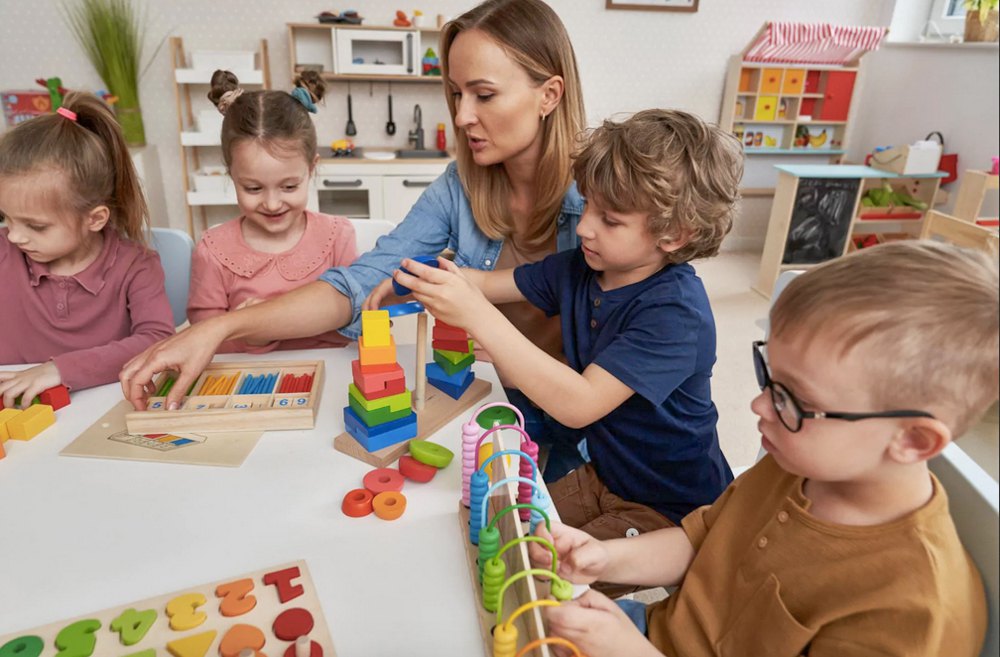
And this, as I understand it, is the weakest link in the entire process. What will happen to kindergartens already facing a significant decline in enrolment?
Take, for example, a kindergarten that previously had 150 children but now, due to the war, has only 12. Realistically, the community cannot afford to maintain such a large facility under these conditions. However, selling or privatising it is not an option, as that could lead to speculation. Besides, if there are no children to attend, why would it be privatised? The building can still only be used for educational purposes.
That said, there are alternative uses:
- It could be repurposed for other educational services, such as extracurricular activities.
- It could be preserved in anticipation of future demand.
We are still expecting a post-war baby boom, and there is a demographic strategy in place to encourage this growth.
Do you have any estimates of how many kindergartens may be closed in the coming years?
I won’t give an estimate out loud. The situation will not be uniform. Some kindergartens will close their second floor—this is already happening—while others will shut down two or three group rooms.
I would like to emphasise that no European country offers such a comprehensive package as we do—12 hours of free kindergarten attendance. On top of that, we provide social workers, physical instructors, and musicians. This is a luxury, and we are fighting to preserve it. However, maintaining the full package is challenging, especially as it is funded solely by local budgets. That is why it should be tied to something. For example, we could encourage parents to return to work, allowing their children to attend kindergarten full-time. Currently, we do not have such a system.
With this in mind, I repeat: if there is a shelter in a library, set up a preschool unit there. If a university has the capacity, establish one there. The new law on preschool education—reflecting state policy—states that the service should be brought to the child. Communities can open preschool units of any type, not only in libraries, schools, or universities but also at businesses and enterprises.
Our ministry, for example, is opening a communal kindergarten for employees’ children and others. Although vacant places are available in preschools in the Shevchenkivskyy district, there is no kindergarten nearby. This new kindergarten will have a small group of 12 children, with one room, a playground, and an adapted toilet. The city of Kyiv will provide salaries for the educators.
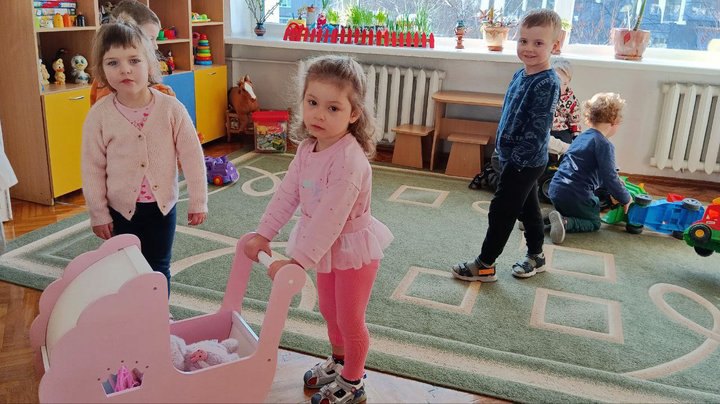
Do you know of any other similar examples?
Yes, I have a pilot project that I really like, and I’m going to advertise it now. It is the Aurora multimarket. They already have a kindergarten for employees’ children in Poltava. Initially, it was just a children’s room, and the company covered the teachers’ salaries. Now, they are transitioning to a full-fledged educational process, where the community will pay the salaries of educators who are currently working online but will soon be teaching full-time.
This arrangement does not negatively impact the hromada, as many employees work remotely, while the children benefit from in-person learning with professional educators following a structured programme.
This model is also advantageous for businesses. Many companies would like to open kindergartens because it would allow mothers to return to work more quickly. Mothers, in turn, feel more at ease knowing their child is nearby—especially during wartime. However, businesses are often hesitant because childcare is not their area of expertise, and they don’t know how to manage it.
Here, the community steps in to handle the educational process. The kindergarten itself is a communal institution—the business provides the premises, while the community covers the educators’ salaries.
Additionally, we have kindergartens at universities, which have existed for some time but were previously in a legal grey area, operating unofficially as children’s rooms. Now, they can finally be legalised as preschool units within municipal preschool education institutions. In other words, we have a decentralised model where a municipal institution serves as the centre, with educators working in different locations across kindergarten branches.
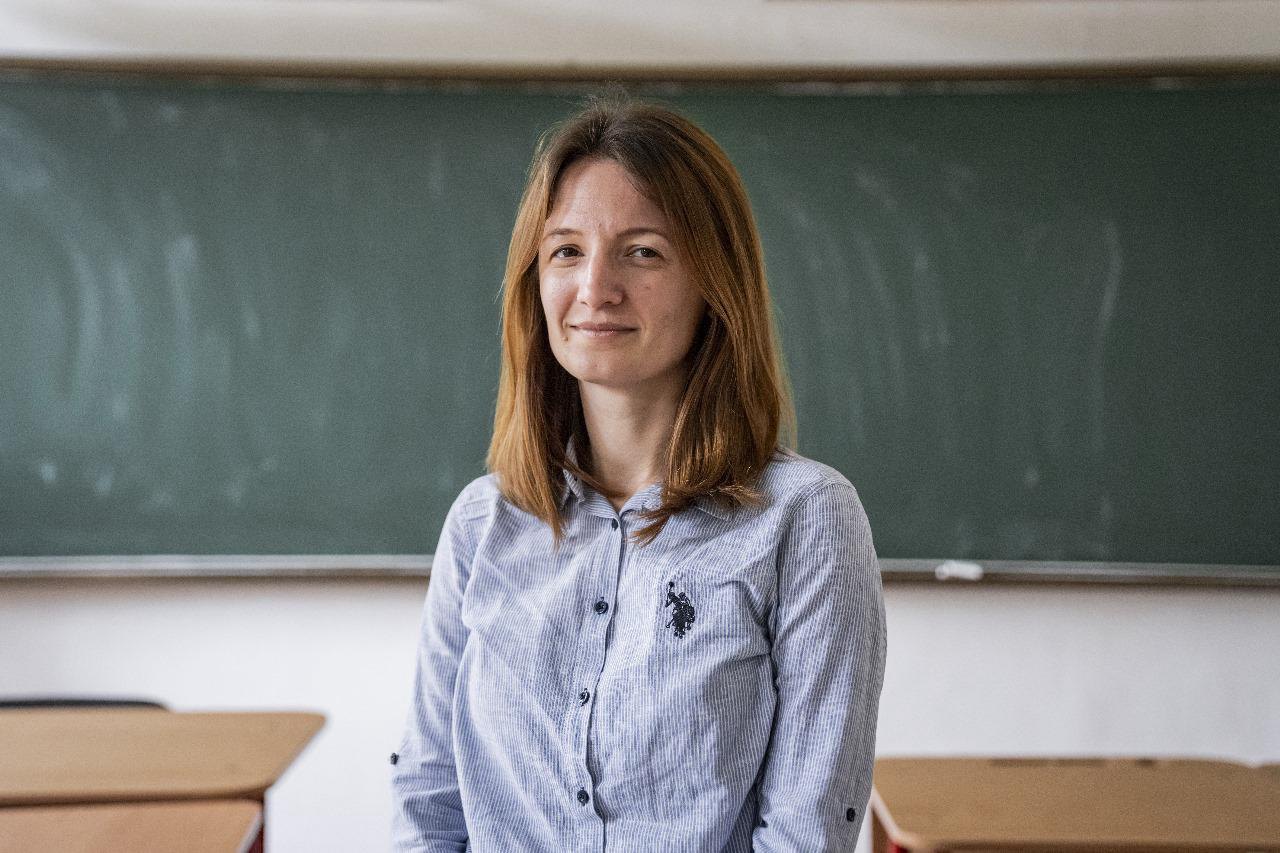
Salary realities
As soon as the new law on preschool education came into force, the Education Ombudsman began receiving numerous inquiries about salaries. It seemed that, as a result of the new regulations, educators had to work harder for the same pay.
At first, there were indeed some strange developments at the local level. Some people said, “Oh great, we’re closing everything” (this is no longer the case). Many practitioners and, unfortunately, communities, had the impression that workloads had increased while salaries remained unchanged. However, this is not the case.
For the first time, the law regulates teachers’ working hours and workload. Now, the weekly working hours of preschool educators, under a single tariff rate, include both time spent directly with pupils and time allocated for methodological work. This was the main point of contention. Educators and teachers have always carried out organisational, advisory, and methodological tasks, but these were never officially accounted for. We have now streamlined this process, which is why concerns have arisen.
Ms Nadiya Leshchyk assisted us by providing all the necessary information. In February, we issued the relevant clarifications, emphasising that institutions should continue using the existing staffing table until a new one is introduced. In other words, nothing should change at this stage—no one is worse off, and no one is required to work more than before. However, what needs to be explained clearly is that, in some cases, educators had been working fewer hours than required without realising it, due to inconsistencies in the previous law. This transition period is therefore proving to be difficult, and as of now, there are no new regulations in place because the key document in this process—the new staffing table—is still being developed. It has only recently been opened for public discussion.
So, are we repeating the same mistakes?
This has never happened before, believe me…
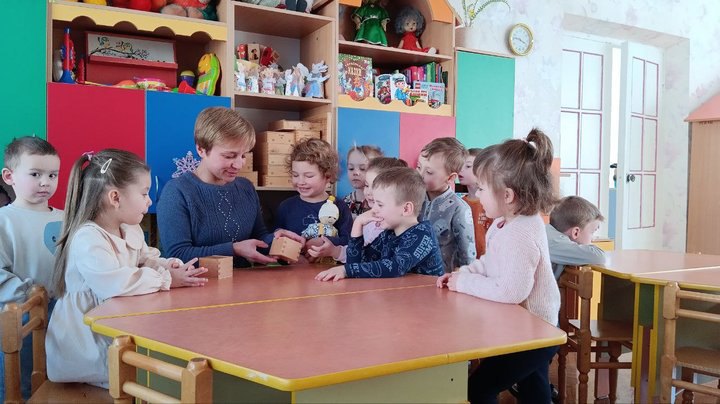
What will change in the new staffing table?
Previously, teachers worked in a group for six hours a day; now, this will be reduced to five. At the same time, we aim to raise the tariff coefficients from 1.8 to 2.17. This means that educators will either receive higher salaries for the same work, an additional rate per shift will be introduced, or group working hours will be reduced.
However, these are not the only changes. In fact, we aim to ensure that everyone benefits. For example, we are looking to increase the salary grades of musicians and physical education instructors, which would lead to a corresponding salary increase. We are also adjusting the pay scales for teaching assistants. This does not mean these changes are guaranteed—we are currently in a public consultation phase. The Ministry of Finance has stated, “This is a hromada budget issue, so it must be agreed upon with the OBA.” We are in discussions, and each regional military administration must give its approval.
And they write: there is no money, the state takes everything from us.
Yes… For example, the majority of communities agreed to raise salary grades. A few said they had no money. So, we go to the Ministry of Finance and say: the majority has agreed. But it’s like a constant tug-of-war. In any case, we will not introduce radical salary changes, but the situation should still improve.
Right now, the average salary of an educator is UAH 12,000. But in reality, many receive the minimum salary of UAH 8,000. This is a disaster. And it shouldn’t be like this. The fact that people work purely out of enthusiasm is absolutely unfair. That’s why I keep saying: first, I can’t promise anything, but fair remuneration is a priority. We are well aware that we will be developing a new state standard for preschool education and revising programmes. But how can I impose a new standard on educators when their financial situation remains unchanged?
In general, do we have enough educators now, given that some may have left?
We have 101,000 educators. And there are 5,489 vacant positions. That means there is a shortage of 5,000 educators, which is significant. But the real question is why there is a shortage. We are currently collecting data on this. The first and most obvious reason is low salaries. Because of this, unfortunately, very few new people enter the profession. Three years ago, the average age of an educator was 54. So, I assume it’s now 54 plus three.
The longer you work in the profession, the higher your salary becomes, thanks to bonuses for qualifications and years of service. Young workers, however, are excluded from these benefits. So, on one hand, the system is designed to retain experienced educators. And, in fact, it has—despite the low salaries in the sector.
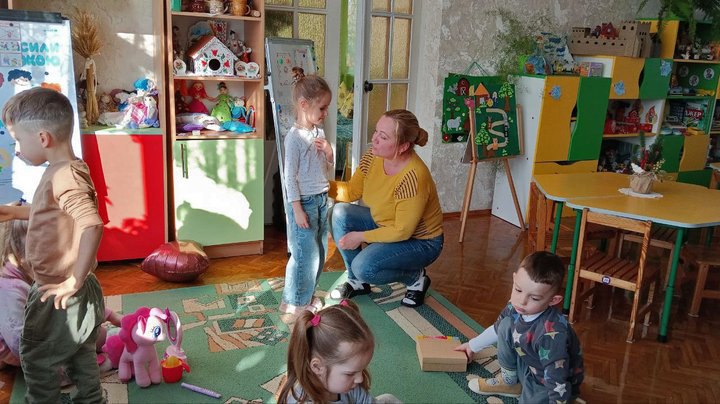
But to attract new educators, salaries simply need to be higher. And that is no easy task. I’ve been around the Ministry of Education and Science, and there’s no hidden bag of money anywhere (laughs). They’ve tried to secure funding through subventions before—they’ve been asking for it for 30 years. Since preschool education is officially compulsory from the age of five, it was moving towards the point where subventions should have been introduced from that age. We were making progress. But then COVID hit, followed by a full-scale war, and we ran out of time.
And realistically, we won’t receive the subvention this year either. But we’ve come up with another mechanism. I won’t reveal it yet. Let’s wait and see how it works.
And what did the Ministry of Finance say about it?
It has approved it. And we’ve never made it this far before.
Why, in fact, did this approach to preschool education develop?
When decentralisation began, everyone assumed that, since kindergartens were essential for enabling parents to work, hromadas would take responsibility for managing their institutions.
But things didn’t go as expected.
In reality, some hromadas take excellent care of their kindergartens.
Which ones, for example?
Take Zhytomyr. Whenever I visit their institutions, I’m always impressed. They invest in their kindergartens, providing modern facilities, numerous free clubs, and a strong material base—it’s clear that this is a real priority for them. Or consider a hromada that, even before the law was passed, paid a 107% monthly bonus to kindergarten staff. Meanwhile, others are simply waiting for an excuse to close their institutions.
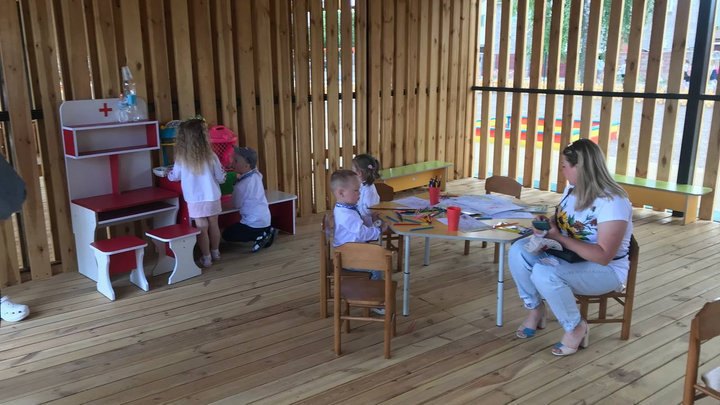
And how can the reform equalise the situation in the regions under such conditions?
If we secure funding, this will solve the problem. If not, we will have to seek alternative funding sources.
In general, inequality is inherent in the decentralised system itself. This also applies to schools to some extent. While the state provides a subvention, communities are still responsible for maintaining institutions. Whether that’s fortunate or unfortunate is debatable, but we have a vast country, and decentralisation is essential for development. However, people on the ground must understand their rights—they are voters. They need to realise that it’s not the Ministry of Education that finances preschools, but the community. Of course, they can write to the Ministry saying, “Give us a salary,” but they should be addressing the hromada as well. And, in principle, they do—we have parental committees.
They often still collect money from parents.
Sometimes they do, and sometimes they resolve issues with the local authorities. It varies. But we must also remember that the country spends all its revenue on the war, and the entire social sector is funded by donor contributions.
And when you talk to institutions now, what kind of feedback do you get from them?
First and foremost, there is a lack of understanding about what the law changes. This is something we need to address. Beyond that, salaries and the material and technical base remain the key concerns.
As for the programmes, there’s no real issue with them—people are saying, “We’re just barely managing—give us a new, high-quality programme that meets European standards.” We will revise them, but, in principle, our institutions already have academic autonomy. A good teacher should be adaptable and responsive to the needs of children. That means the content of preschool education has been continuously evolving in one way or another.
However, what we haven’t changed much is the organisational structure, which has led to catastrophically low salaries in the sector. The new law finally allows us to align with reality.








